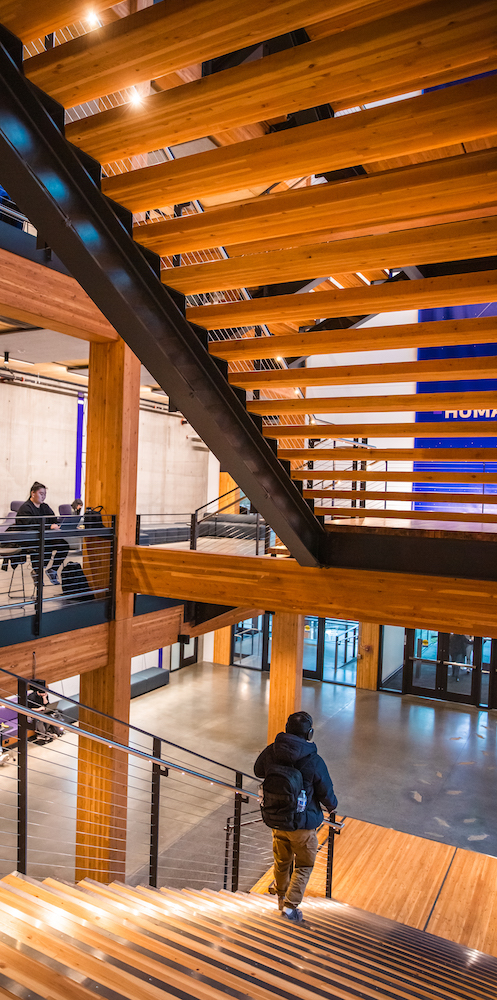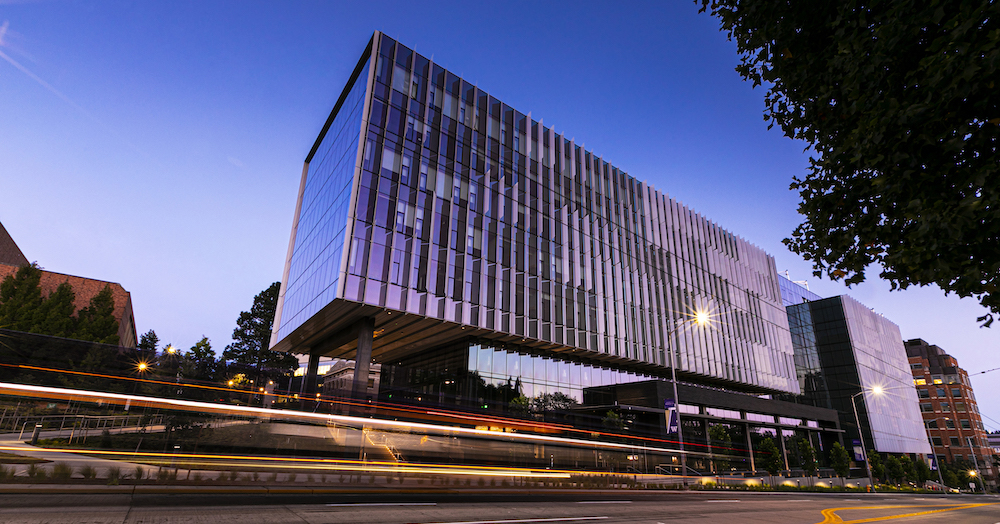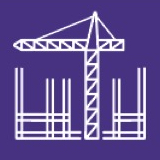The University of Washington adopted its updated Green Building Standard in July of 2024. This new standard provides a holistic approach to ensure that building and construction across the UW aligns with the University's sustainability goals as well as the vision and values.
The UW Green Building Standard ensures that all construction and renovation projects maximize energy and water efficiency, reduce carbon emissions - both operational and embodied, and align with principles of equity, ecological harmony and health & well-being.
Many similar building standards at other institutions only address new construction or major renovations. The UW's new standard introduces four project tiers, ensuring that targets are appropriately scaled for a diversity of project types including partial renovations and system upgrades.
 New UW Green Building Standard overview
New UW Green Building Standard overview
- Water: 25-40% below code, depending on project
- Energy: EUI below state requirement
- LEED: Gold certification (or equivalent)
- Embodied carbon: less than 500kg of CO2e/m2 in primary materials and product specific targets
- Ecology: includes UW Bird-Friendly guidelines (created by UW PhD student)
- Health & Wellness: Implement one Fitwel credit, include showers and changing facilities for bike commuters in large projects
- Equity: Lactation facilities, gender-neutral restrooms
- No new fossil fuels: No new or expanded fossil fuels systems in buildings except for backup power or research purposes. Buildings are encouraged to connect to the UW's central steam plant, which has a plan for decarbonization under the Energy Transformation strategy.
- Required Life Cycle Cost Analysis (LCCA): Projects will use LCCA to evaluate technologies to achieve performance goals and optimize energy and water use.
The standard includes a minimum requirement of LEED Gold certification for new buildings. The UW Sustainability Map shows which current campus buildings are LEED certified.

Project types
The tier for a project is set early in project formation to allow for the requirements to be considered with scoping and budgeting the project. The Green Building Standard sets appropriate requirements based on the scale of the project.

Tier 1: New construction and major renovation

Tier 2a: Partial building renovations
Tier 2b: Interiors projects

Tier 3: System upgrades

Tier 4: Non-energy projects
FAQs
There is also a list of technical FAQs for project managers and design professionals available.
If you have additional questions about the Green Building Standard, contact UW Sustainability Director Lisa Dulude at lisad3@uw.edu.
See the previous 2019 standard for archival reference.